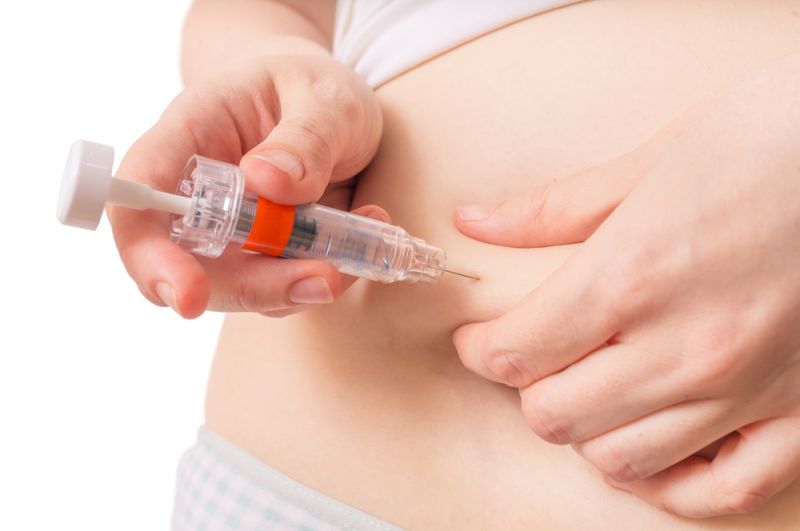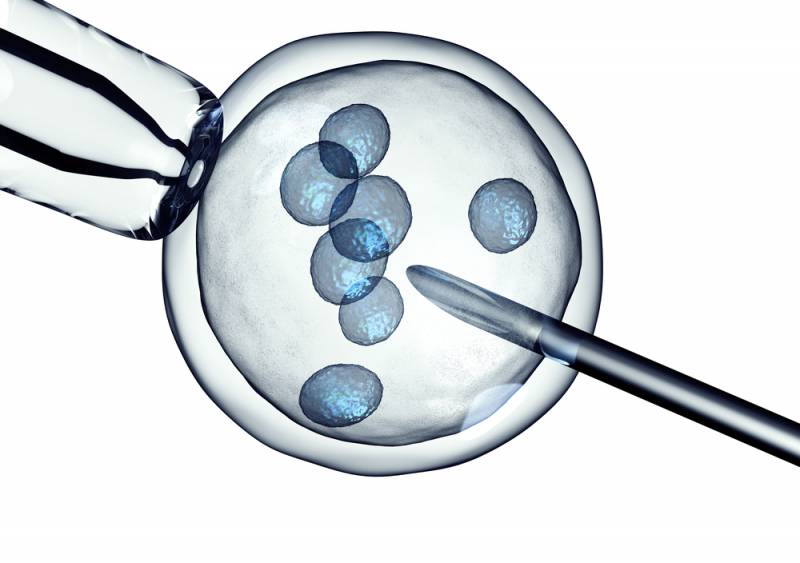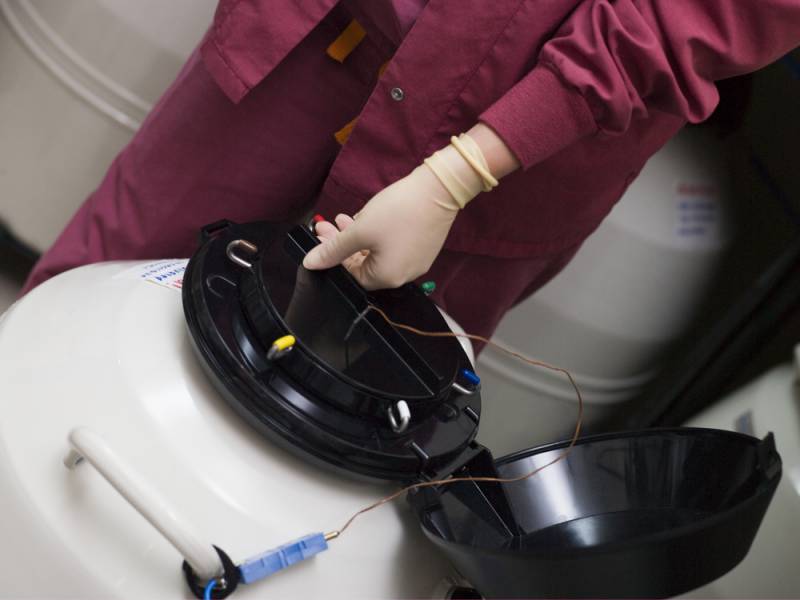The IVF Process Explained in 7 Steps

Approximately 1 out of every 6 couples in Australia struggles with infertility. This simply means that the couple is struggling with conceiving a pregnancy.
It is a very unfortunate truth and can be very difficult for the couples dealing with it as many of them desperately want a baby and just simply are unable to naturally conceive.
Fortunately, there is hope for these couples through fertility treatment!
There are many levels of fertility treatment and there is a different approach that will work best for every individual couple. One thing that is sometimes used to help a couple struggling with infertility to conceive a child is called in vitro fertilization, often shortened to IVF.
What Exactly is IVF?
IVF is a process used in the treatment of infertility.
Simply put, it is conceiving an embryo outside of the mother’s body in a dish before placing the embryo back into the mother’s body in hopes that it implants and grows.
Depending on the circumstances, the egg and sperm used may be that of the perspective parents, or they may be that of donors. There may also be a combination where the egg is from the perspective mother and the sperm is from a donor or vice versa.
IVF is a fairly long and complicated process that has no guarantee of results, but it is often a couple’s best chance at having a child and when it is successful, the parents certainly agree that it is completely worth it.
What is the Process of IVF?
If you are struggling with infertility, and are considering IVF, you will definitely want to understand the process well before beginning.
The first step will be to get a referral from your regular doctor in order to see an IVF specialist. They will be able to discuss everything you need to know and help you understand the process that you will need to go through for IVF. This is also when you will be able to learn about the costs of IVF.
It can often be very expensive, sometimes costing thousands of dollars for a round of IVF. You may get some help with Medicaid rebates and if you have private insurance, they may coversome aspects of treatment as well.
1. Preparing for IVF

Before you ever even begin the IVF treatment process, you will most likely be instructed to begin taking a prenatal vitamin and possibly other supplements as well. These are things that your doctor or specialist will discuss with you.
You should also adopt a healthier lifestyle as if you are already pregnant. This can help prepare you for the treatment, and hopefully for the pregnancy.
2. Initial Hormone Injections

To start the process of IVF, you will have to receive hormone injections.
These will be daily injections, so typically you would be trained to give them to yourself. Some women are uncomfortable with this, and if that is the case, your partner can be trained to give them to you instead.
The purpose of these hormone injections is to stimulate your ovaries into producing more eggs than it typically would with a natural cycle. By causing your body to produce these extra eggs, more eggs will be able to be collected which can give a higher chance of successfully creating and implanting an embryo.
During this period of time, while you are giving yourself these initial injections, you will be closely monitored using blood tests and ultrasounds. This will help to understand how your hormone levels are doing as well as when your eggs are mature enough to be harvested.
3. Collection of the Eggs

Once your eggs are ready for collection, you will be given another injection to trigger the ovulation of the matured eggs so they are able to be collected.
Approximately 36 hours after receiving this injection that triggers your ovulation, the eggs should be collected. For the eggs to be collected, you will need to be given a mild sedative in addition to a local anesthetic in your vagina. Then, your doctor will insert a needle through your vagina into your ovary to collect your eggs.They will use ultrasound to see what they are doing and place the needle accurately.
Once the eggs are collected, they will be evaluated for maturity and quality in order to decide which are the best choices to fertilze.
4. Fertilization

Usually, at the same time that you are undergoing the procedure to collect your eggs, your partner (or a sperm donor) will be asked to give a sperm sample. This is done by your partner (or the sperm donor) ejaculating into a container.
The sperm will need to be evaluated to make sure that they are suitable for fertilization. The egg and sperm will be put together in a dish along with a special substance that provides nutrition and is similar to what is found in your uterus.
After being left in an incubator overnight, the eggs are checked on to see if they have been fertilized or not. Some of the eggs may not become fertilized, or may become fertilized and then not grow properly.
That is why there is a higher chance of success when more eggs are able to be collected.
5. Transfer of Embryo

The procedure of transferring the embryo into your uterus is very simple and doesn’t take very long. You won’t need to receive any type of anesthesia for this procedure and it should be only mildly uncomfortable.
About 5 or so days after fertilization, he embryo is placed in a thin tube and the tube is then inserted through your vagina, through your cervix, and up into your uterus. It is then left in your uterus.
You will continue to receive hormone treatments to ensure the best possible conditions for your embryo to implant and begin growing.
6. Freezing Embryos

It used to be common to place multiple embryos in the uterus at this point with the thought process that it would increase the chance of one of them implanting.
However, this has been shown to not really be true and does not increase the chance of pregnancy.
Therefore, only one embryo is usually implanted at this point as a singleton pregnancy is safer and has a better chance of a positive outcome. If you have more than one quality embryo created, you can choose to have extra embryos frozen for future use should you need them. Read more on the egg freezing process here.
7. Pregnancy Testing

This is possibly the hardest part of this process because you now just have to wait. You will wait generally just over two weeks before returning to the IVF clinic to test to find out if you are pregnant.
This can be a very anxious, scary, and exciting time!
You may have severely mixed feelings which is completely normal. Hopefully you will be successful and become pregnant with your first round of IVF treatment.
Unfortunately, this is not always the case, and some couples may choose to continue trying with subsequent rounds of the IVF treatment if the first is not successful.
Choose What is Best for Your Family
The process of in vitro fertilization is a long and often tiresome one.
It can be uncomfortable, stressful, expensive, and sometimes, disappointing. Even once you go through everything that it entails, there is no guarantee of a successful pregnancy or birth.
This can be a scary thought for many, and may be difficult to make a decision as to whether you want to go through IVF or not.
Additionally, if you do go through a first round of IVF, and are not successful with it, you will have to decide whether or not to try again which can be even more difficult. You will need to take many things into consideration such as your health, your age, and your financial situation.
Discuss all aspects of these things with your partner and your health care professional and make whatever decision you truly feel is best for your family.
Most Viewed
-
5 Common Methods of Contraception
Last updated On by Percy Oad -
How to Cope with Male Infertility
Last updated On by Alina -
What is the Difference Between Primary and Secondary Infertility?
Last updated On by Madison -
How to start a child-free life after infertility
Last updated On by Jacinta







